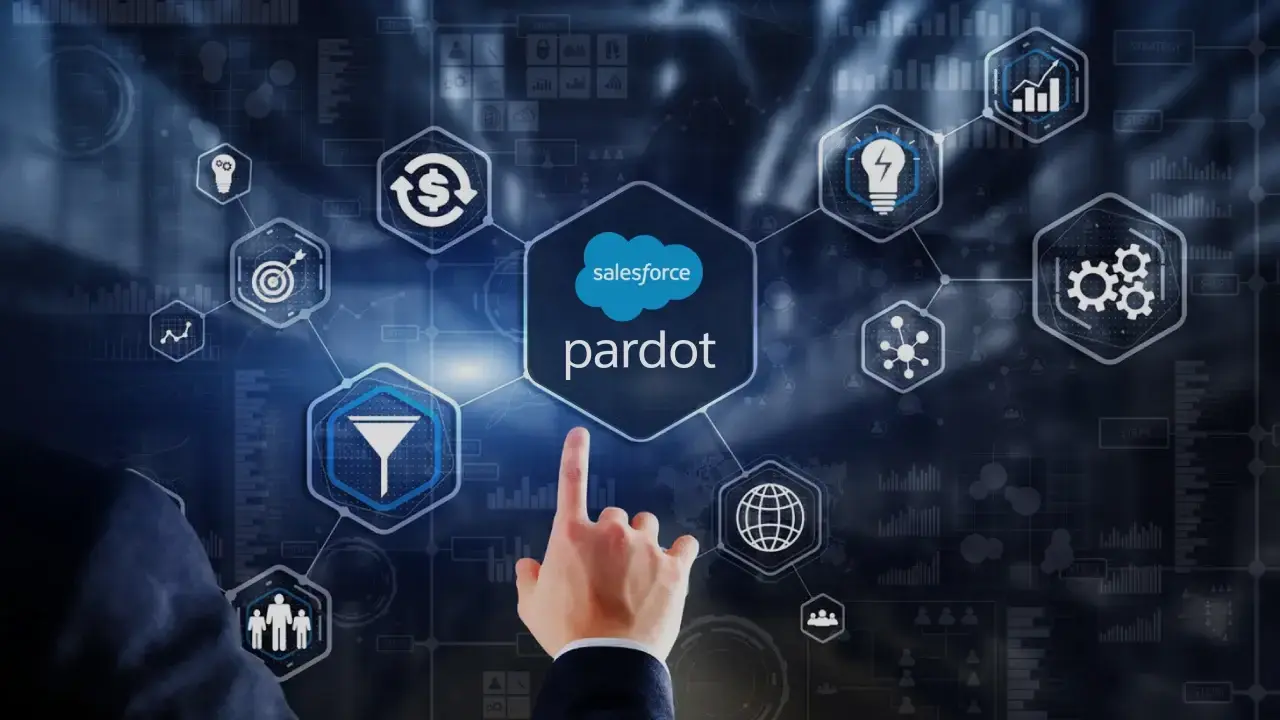HubSpot and Pipedrive are solid CRMs. But in our experience, there are some stark differences you need to consider before making the leap.
From what we’ve seen, HubSpot works best when you need your sales, marketing, and customer success teams working from the same playbook.
It's built for orgs. where deals depend on coordinated handoffs, lifecycle visibility, and automated workflows that actually work across departments. You get deep reporting, predictive analytics, and native integrations that don't require duct tape.
Pipedrive is for sales teams that want to close deals without fighting their CRM. It's clean, intuitive, and gets out of your way. Your reps will actually use it because it makes sense from day one. But if you're trying to coordinate marketing campaigns or track customer journeys beyond the sale, you'll hit walls fast.
💡Core insight: HubSpot scales with complexity but requires more setup and training. Pipedrive gets you moving quickly, but starts limiting your growth when you need more than basic pipeline management.
Most companies picking between these two are really asking: Do we need a sales tool or a revenue operations platform? That answer determines which limitations you can live with and which capabilities you can't grow without.
HubSpot vs. Pipedrive: Who should choose what
- HubSpot = best for multi-team alignment across Sales, Marketing & CS
- Pipedrive = best for simple, sales-focused teams that want speed and ease
- HubSpot scales better with built-in automation, reporting, and integrations
- Pipedrive wins on usability and fast adoption for lean sales teams
HubSpot is designed for companies that require a seamless alignment between Sales, Marketing, and Customer Success.
If your growth depends on cross-team collaboration, lifecycle visibility, and centralized data, HubSpot’s built-in automation and native tools give you that edge. It’s ideal for fast-scaling teams that need structure without sacrificing flexibility.
Pipedrive, on the other hand, shines in sales-led orgs with straightforward pipelines. It’s simple, easy to adopt, and focused on closing deals.
If you're a small team that wants to avoid CRM bloat and close more deals, Pipedrive is the ideal solution.
HubSpot vs. Pipedrive: Deep dive from the RevOps lens
Ease of use and adoption
Pipedrive wins points for simplicity. Sales teams love its clean interface and drag-and-drop pipeline. It’s intuitive from day one, with barely any training manuals. If your reps resist CRMs, this one gets buy-in fast.
HubSpot offers a comprehensive, feature-rich platform, but mastering it can be challenging, especially when using multiple hubs.
However, once teams are fully onboarded, it transforms into the central hub for all GTM functions. With marketing, sales, and customer success all working within a unified system, it creates the kind of alignment that RevOps teams dream of.
💡Bottom line:
- Pipedrive is easier to adopt.
- HubSpot takes more setup, but drives deeper adoption across the org.
Contact & lead management
Both platforms handle contact and lead management well, but in their own ways.
HubSpot treats leads, contacts, companies, and deals as connected objects in a unified database. That means your Sales, Marketing, and CS teams always work from the same, updated record.
With deep customization (up to 1,000 properties per object), lead scoring, deduplication, and enrichment baked in, it's built for RevOps precision. At higher tiers, you also unlock predictive analytics features and automated lead rotation, which is ideal for scaling organizations seeking scalability.
Pipedrive is more lightweight but still solid. You can build unlimited contact records and manage leads using customizable pipelines.
It works well for sales-focused teams that need a clean, fast way to move deals through stages. In fact, SoftwareReviews ranked Pipedrive as the #1 CRM, citing its user-friendly interface and robust feature set as key strengths.
Source: Pipedrive
💡The takeaway:
- HubSpot provides RevOps teams with deeper control and smarter lead management.
- Pipedrive is great for sales, less so for cross-functional GTM.
Automation & workflows
If automation is your growth lever, HubSpot makes a strong case. Its visual workflow builder lets you automate lead routing, lifecycle stage updates, task assignments, and even multi-touch lead nurturing sequences with ease.
The image below showcases our RevOps expert in action, using AI to build powerful workflows in HubSpot. Watch the full video here.
It's built not just for Sales Ops, but for Marketing and RevOps teams who want full-funnel visibility and control.
Pipedrive has basic automation features like email triggers and activity reminders, but anything beyond deal movement requires third-party tools or workarounds.
It’s fine for linear sales processes, but the limitations become evident when you need marketing handoffs or customer journey logic.
💡Bottom line:
- HubSpot delivers enterprise-grade automation with ease.
- Pipedrive keeps it simple, but that simplicity may stall scale.
Revenue reporting & forecasting
For revenue leaders, visibility is everything, and HubSpot delivers it with precision. Its custom reporting lets you slice data by lifecycle stage, source, campaign, rep, or deal type.
Its forecasting is dynamic, with AI-powered insights and team-level rollups built right into the HubSpot dashboard.
One of Pipedrive’s core strengths is deal automation, and its reporting is effective for monitoring deal progress and sales rep activities. For instance, its Insights Reporting adds clarity on the performance of both regular and subscription-based products linked to your deals.
Pipedrive drives home the reporting advantage by providing a more user-friendly interface, making data easier to navigate and comprehend, all while being more cost-effective.
Source: Pipedrive
💡Bottom line:
- HubSpot provides deeper analytics but with more complexity, better suited for teams with dedicated data analysts or Ops staff.
- Full analytics in HubSpot requires high-tier plans, while Pipedrive includes most reporting features at a lower price.
- Although Pipedrive may have limited capabilities in terms of strategic forecasting, attribution, or customer lifecycle trends, it’s more intuitive and setup-friendly, especially for smaller teams or solo users.
Integration & ecosystem
HubSpot’s ecosystem is vast and deeply integrated. In fact, HubSpot marketplace includes over 1,500 apps, with many offering native, plug-and-play functionality across marketing, sales, and service workflows.
From Slack to Salesforce to Clearbit, most integrations feel like extensions of HubSpot, not bolt-ons. For RevOps teams aiming to centralize tools and data, this makes life easier.
Pipedrive marketplace is also evolving fast, particularly in areas such as marketing automation, reporting, and customer service. It’s functional, but may need duct-taping tools together, which adds overhead as your tech stack grows.
💡Bottom line:
- HubSpot offers a true all-in-one ecosystem with seamless native integrations.
- Pipedrive works best when paired with the right third-party tools, but that adds friction.
Scalability & multi-team alignment
For growing orgs, your CRM has to be more than a sales tracking tool. It needs to be the single source of truth for Marketing, Sales, and Customer Success.
HubSpot was built with this in mind to bring all GTM teams into one system, with shared records, lifecycle stages, and automated workflows that make handoffs seamless. As your teams scale, HubSpot scales with you without needing disconnected tools.
Pipedrive is laser-focused on sales. It does that job well, but it isn’t ready for high-scale multi-team coordination as of now. Marketing and CS will likely end up working in separate platforms, which can lead to siloed data, duplicate outreach, and poor customer experience as you grow.
💡Bottom line:
- HubSpot supports alignment by default.
- Pipedrive is ideal for sales-driven growth, offering a streamlined, high-performance CRM. While it’s not built for multi-team coordination, it delivers exceptional value for sales-focused organizations.
Pricing & ROI comparison
Pipedrive starts cheaper and stays that way if you’re running a lean, sales-only operation. Plans begin at around $15/user/month, with core sales features included.
But once you start adding marketing automation, lead scoring, or custom reporting, you’ll likely need to plug in third-party tools, which adds to your stack (and costs).
HubSpot offers a free CRM with solid basics, but real power comes in the paid tiers. The cost climbs quickly, especially when adding Marketing Hub or Operations Hub. That said, the value scales with it. Native automation, deep analytics, and multi-team alignment reduce tool sprawl and manual work.
ROI reality check:
- Pipedrive offers faster time-to-value for small teams.
- HubSpot delivers higher ROI long-term if you’re scaling across teams.
💡Bottom line: If your teams are spending more time syncing tools than selling, or if your reporting still lives in spreadsheets, the CRM isn’t the system but the symptom.
Before you commit, ask yourself:
- Will this platform still work when our headcount triples?
- Can marketing, sales, and customer success align here?
- Are we investing in efficiency, or just saving on software?
 Dashboards and analytics
Dashboards and analytics





.webp)



